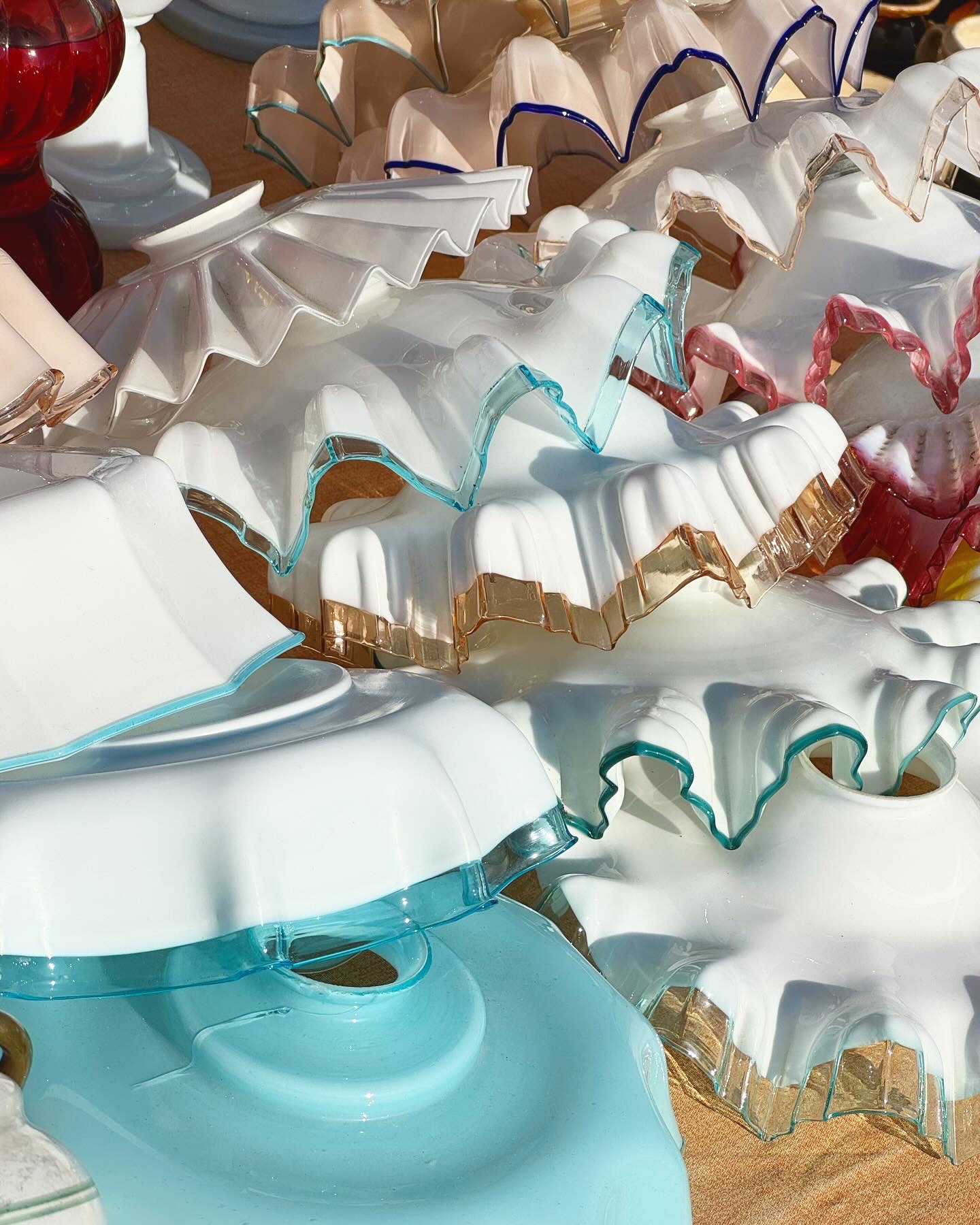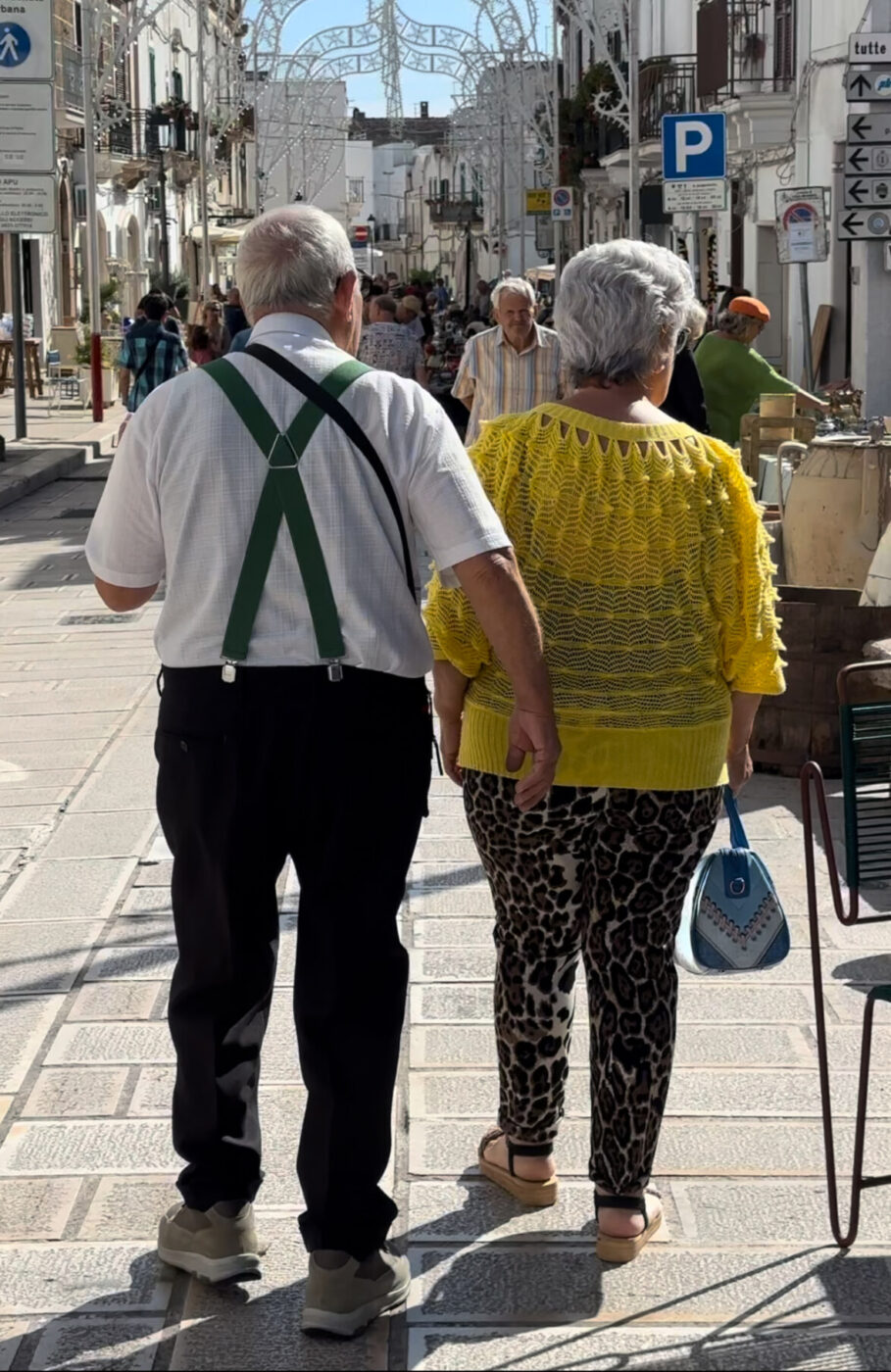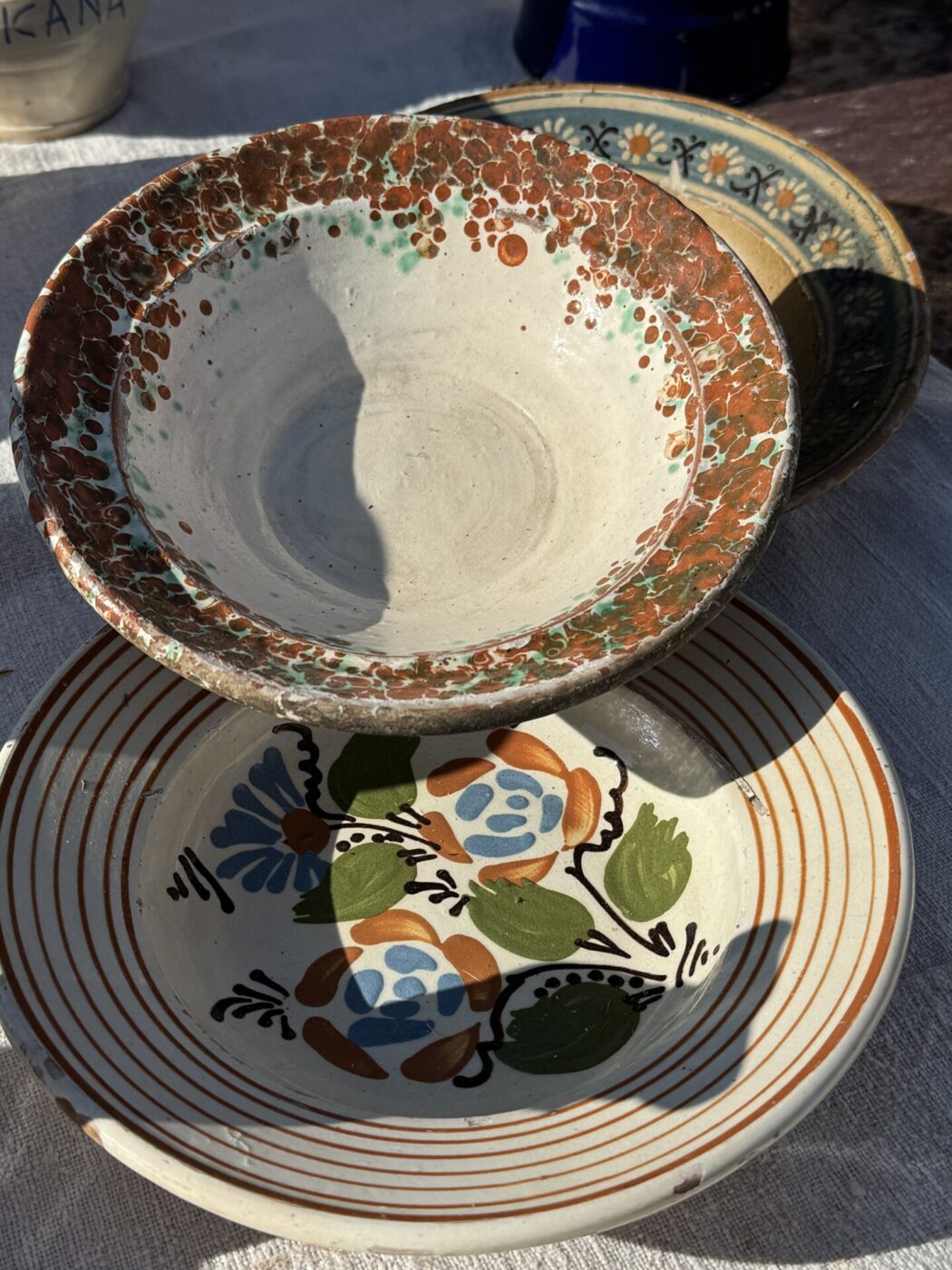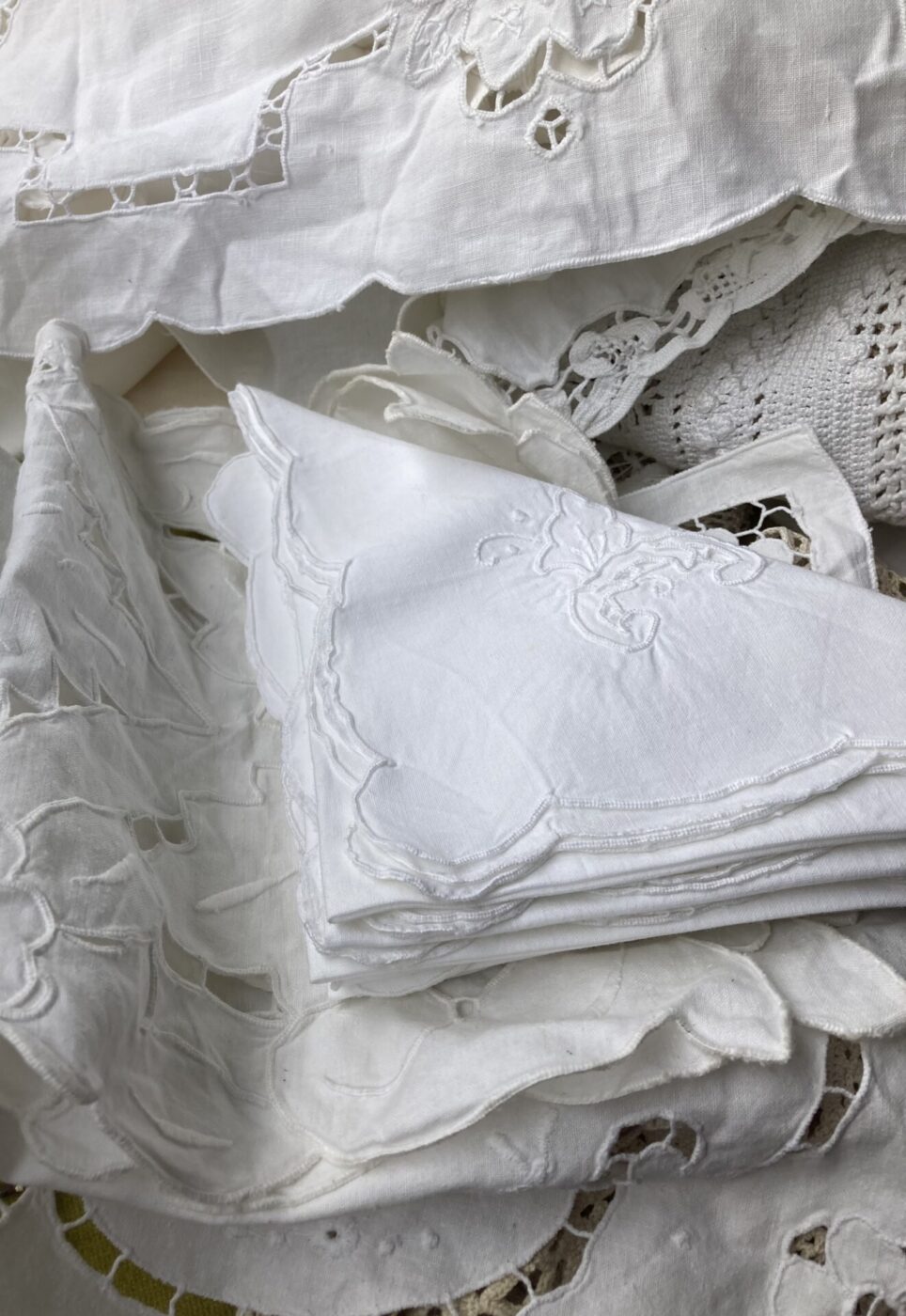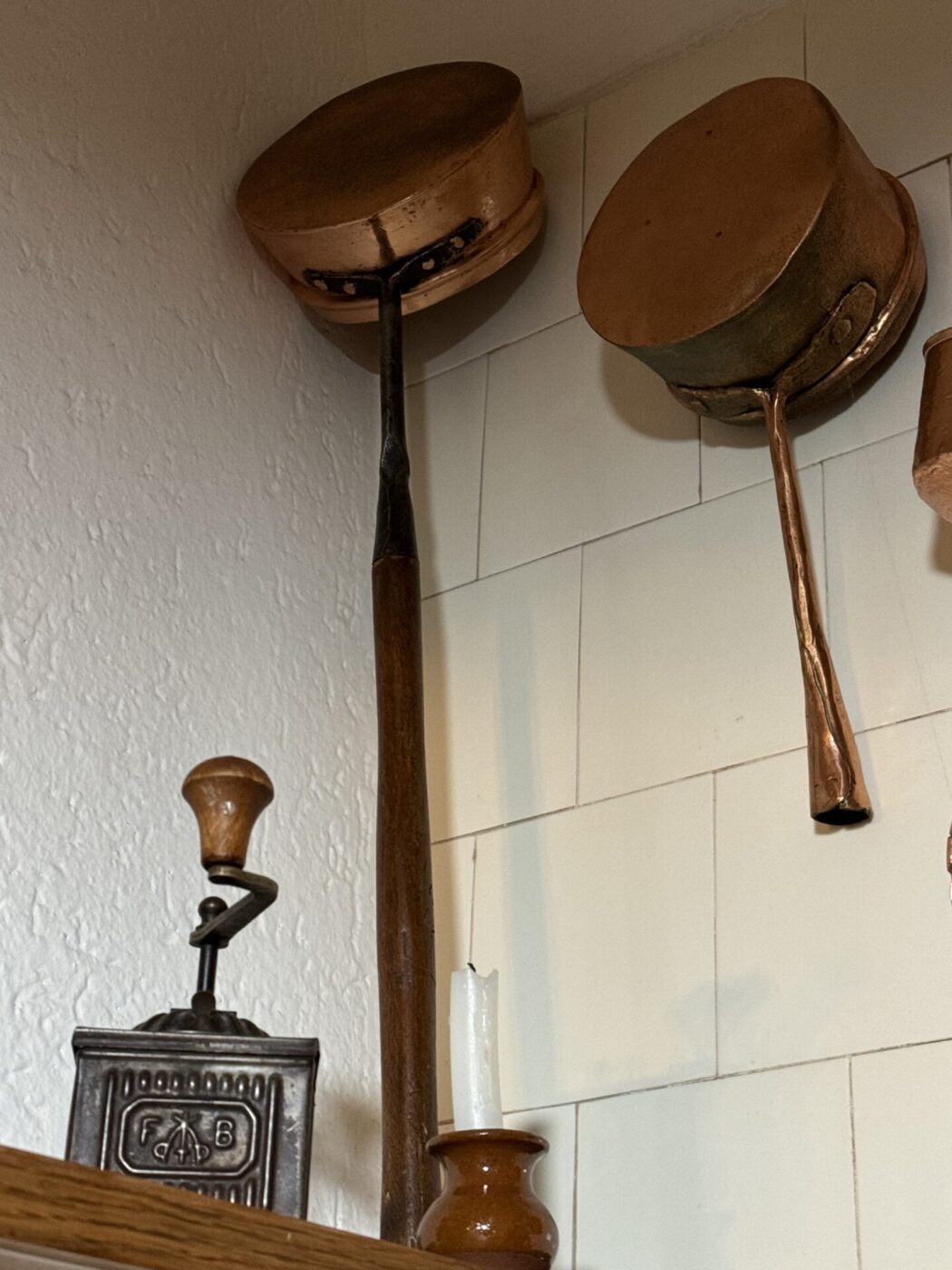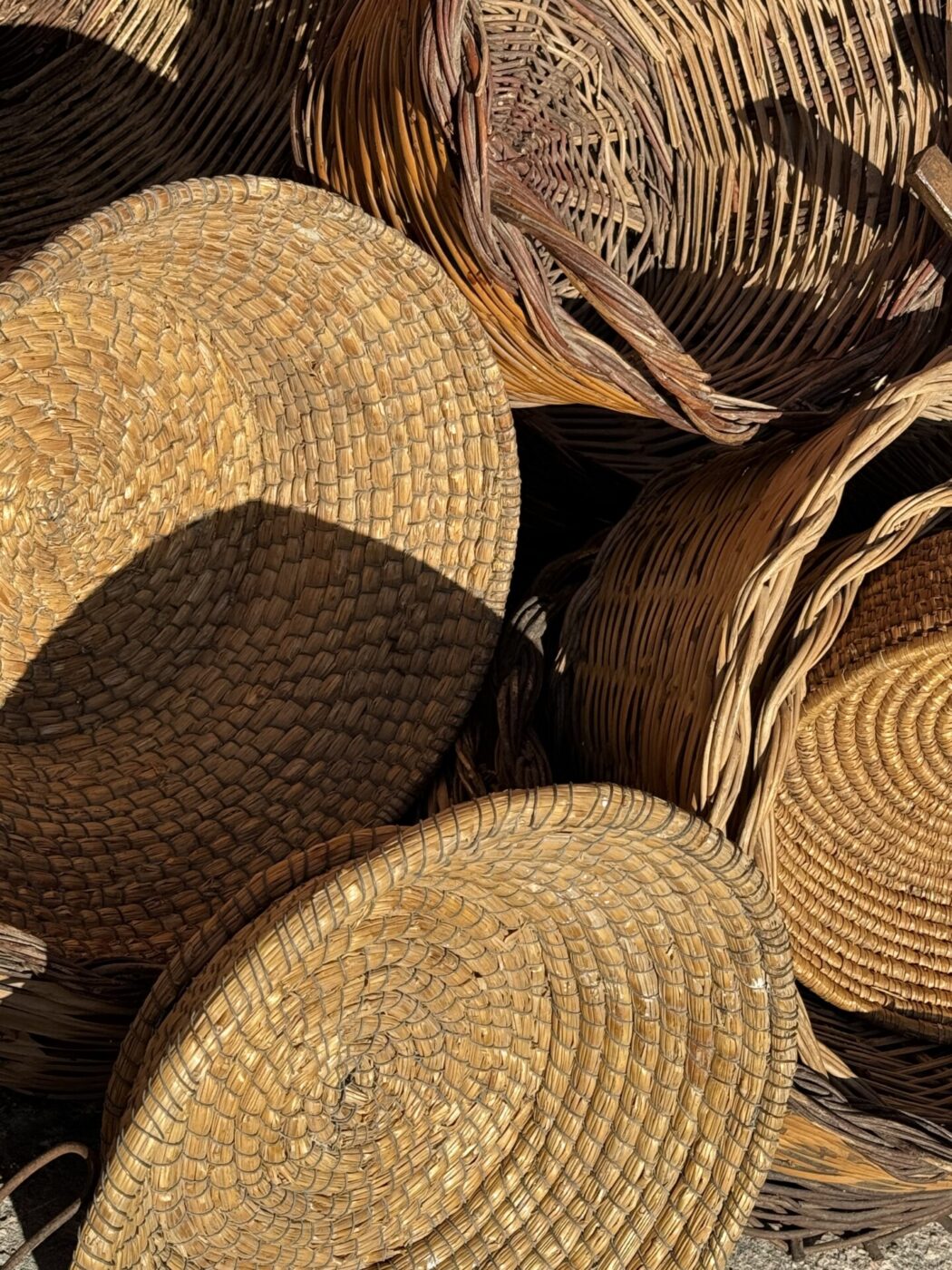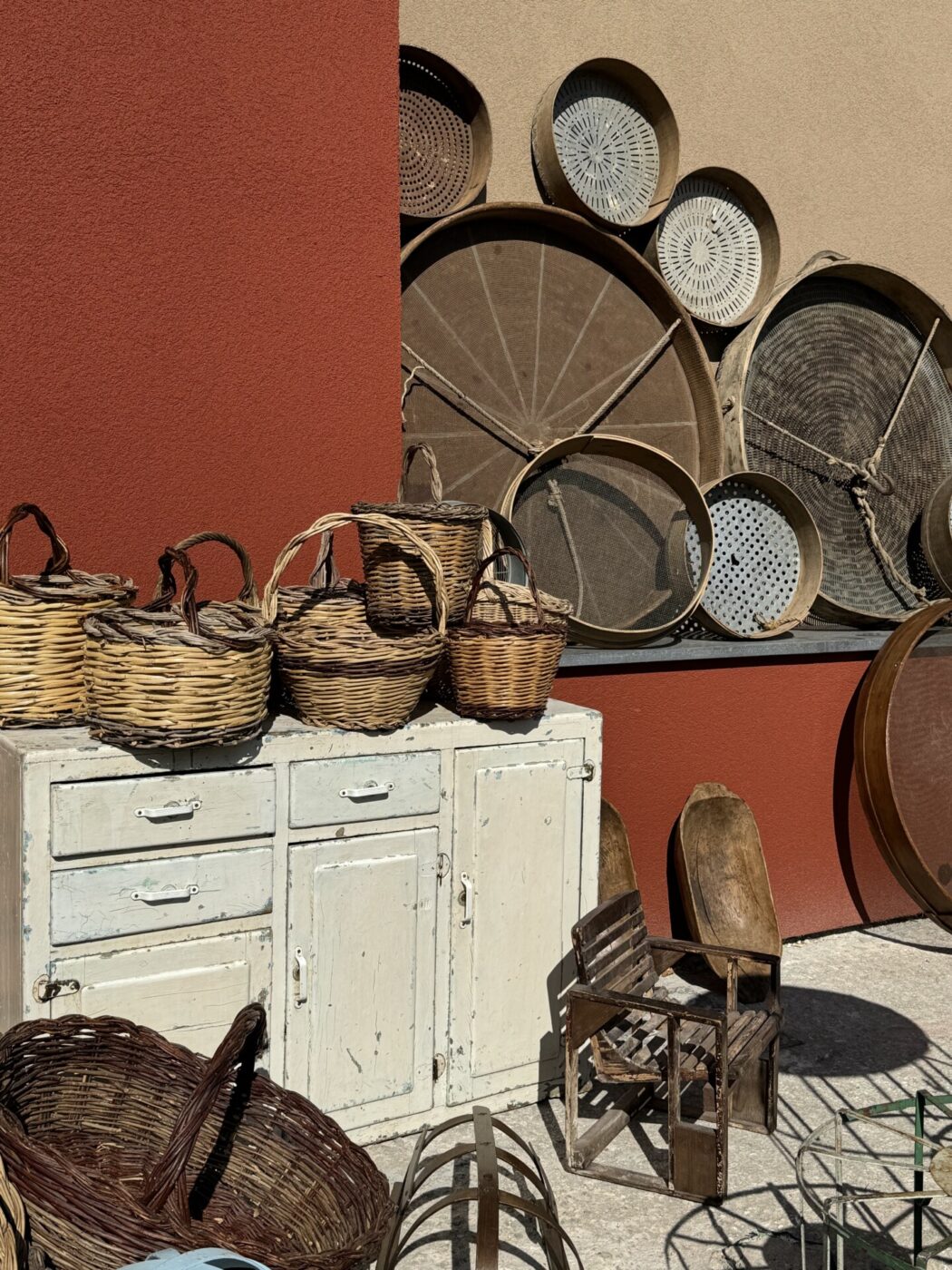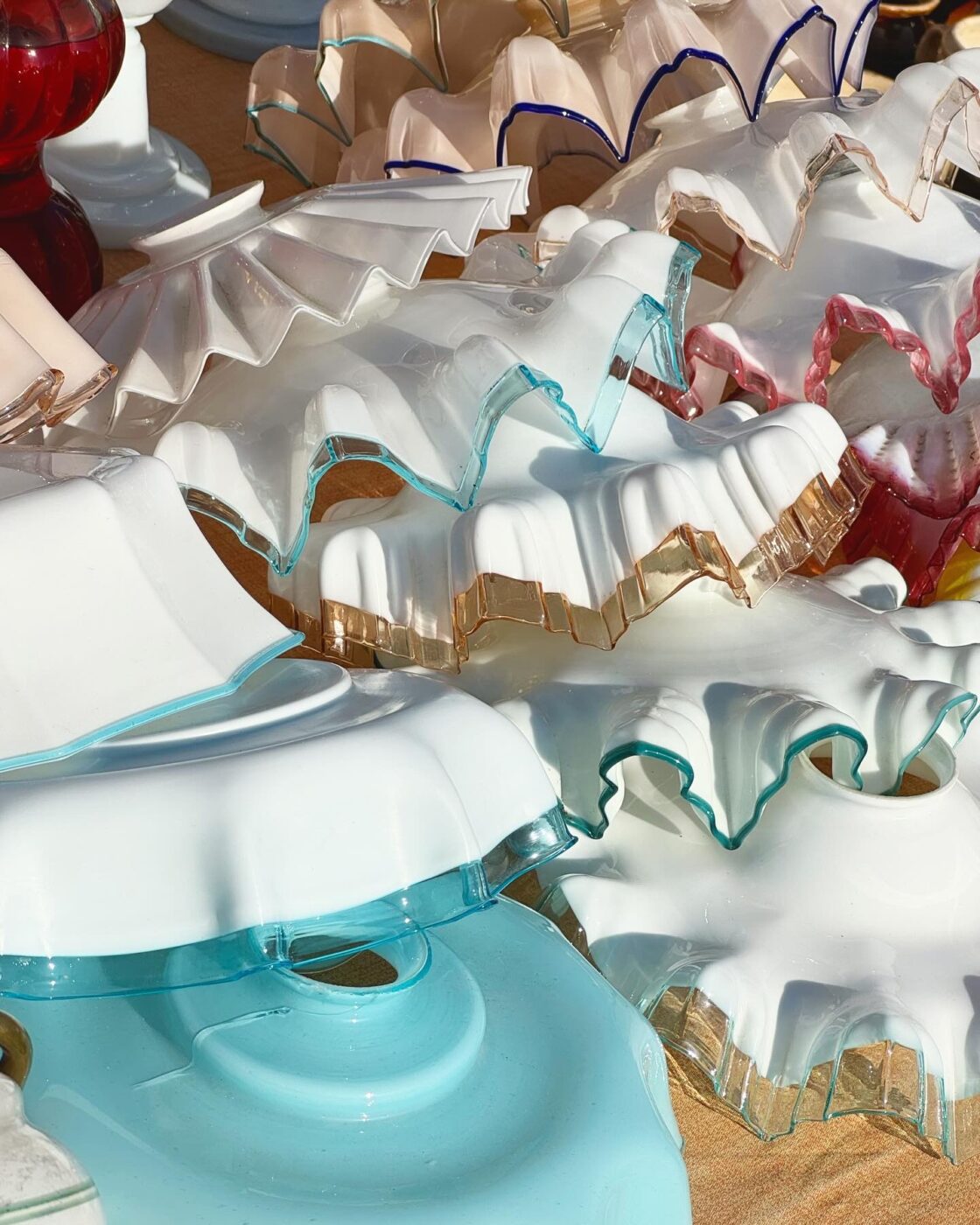Though I love the vintage markets of Florence and the flea markets of Milan, there is one place in Italy that makes my little design heart flutter the fastest: Puglia. For the better half of a decade, I’ve worked as an interior designer based in Florence, uncovering the paradise that is Italian design, but, after marrying into a Pugliese family of my own, I’ve come to learn that the flea market finds of Italy’s heel are absolutely unparalleled.
If I had to choose one word to describe Puglia, it is “pure”. A purity in its cuisine, its wide, open landscapes, and essential architectural lines of masseria and trulli. Puglia is simple, earnest. Let me be very clear: the Puglian people are masters of their crafts, they know and appreciate beauty enormously and their bar for quality is incredibly high, but they simply aren’t extravagant.
At their markets, you might not find elaborate damask textiles or delicate glass pieces like in Venice. You won’t discover ornate works in silver like in Arezzo or high design like in Milan. What you will find, certainly, is beauty expressed in its purest form, beauty born out of necessity. Pieces that often share one special ingredient: purpose.
Strolling through the Puglian markets, I recognize many of the objects my new aunt, Zia Maria, has in her home and garden. Maria, who is 88 years old, grew up as the youngest of nine children in an agricultural family during Puglia’s lean years. What may now be Pinterest-worthy, chic decor, to her are objects of functionality, ones that, out of habit, she uses for their original purposes today–whether while making community-sized portions of passata di pomodoro or lighting up her kitchen’s wood-burning fire over which she slow-cooks legumes in terracotta pots.
It’s her I can thank for fleshing out the encyclopedia to Italian antiques that you can find below. (I should also thank some very special Pugliese market vendors–specifically one named Gianni, who invited me to escape the heat and join him in the shade to rest with an adamant “Vieni qua, sta a fresch!” while he shared his knowledge and the history of his pieces on a sunny market Sunday.) Although the various forms, colors, and artistry of these pieces might be enough to make any designer’s eyes illuminate with delight, the fact that each object also holds a historical purpose and story makes the souls of these markets extra special–and stand apart from other trendy vintage stores.
In Puglia, Sunday is sacred: for mass, pranzo, and mercati. The markets rotate through different locations on each Sunday of the month–don’t worry, we have a schedule below–and many vendors travel between markets, meaning the offerings at each are typically quite similar. You’re likely to score some real finds–whether seagreen-colored glass damigiane, hefty rolling pins, or bronzed copper pots–no matter which Sunday you are in the region. Head to one of the larger markets, however, for a bit more range.
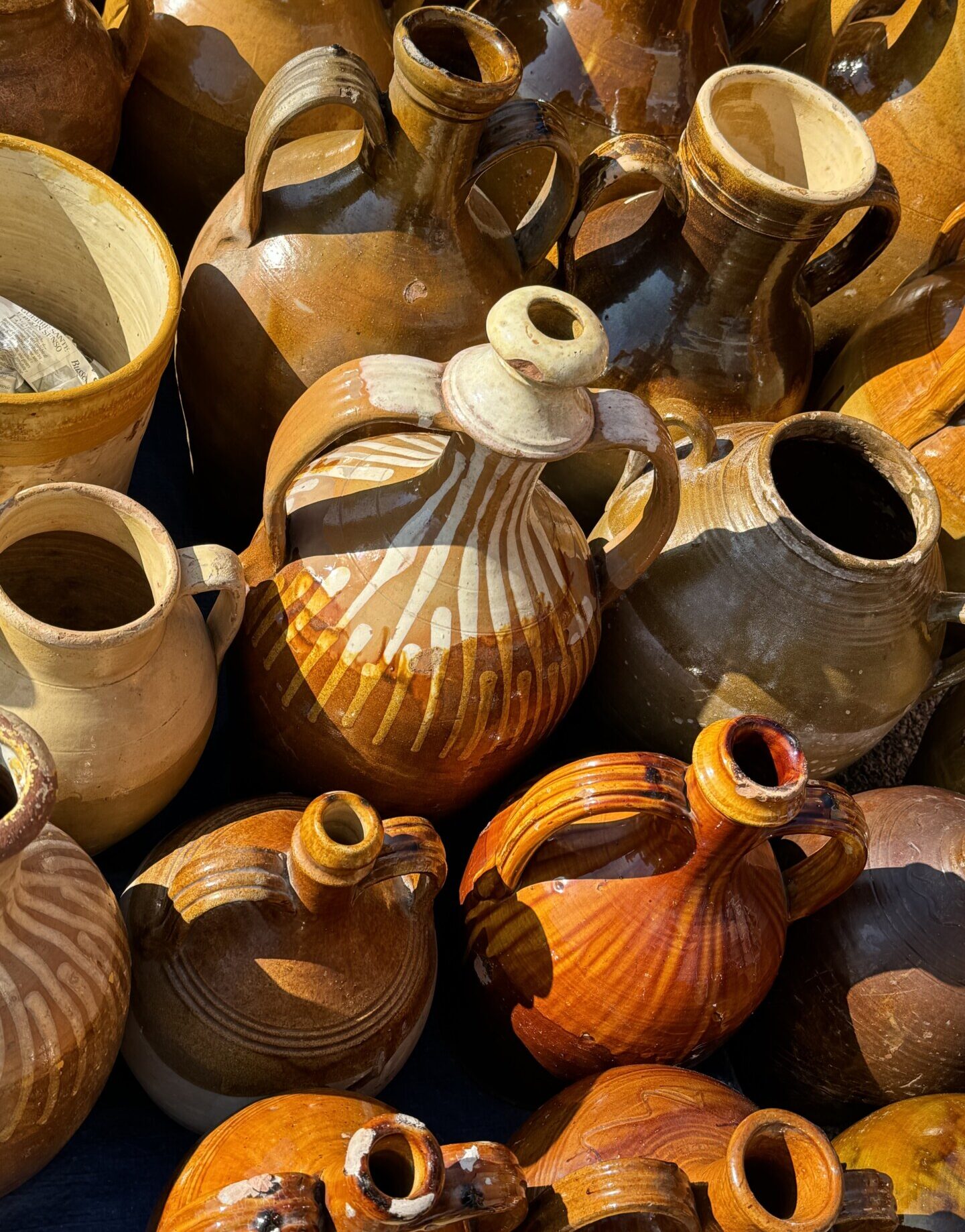
Puglia: Antiques
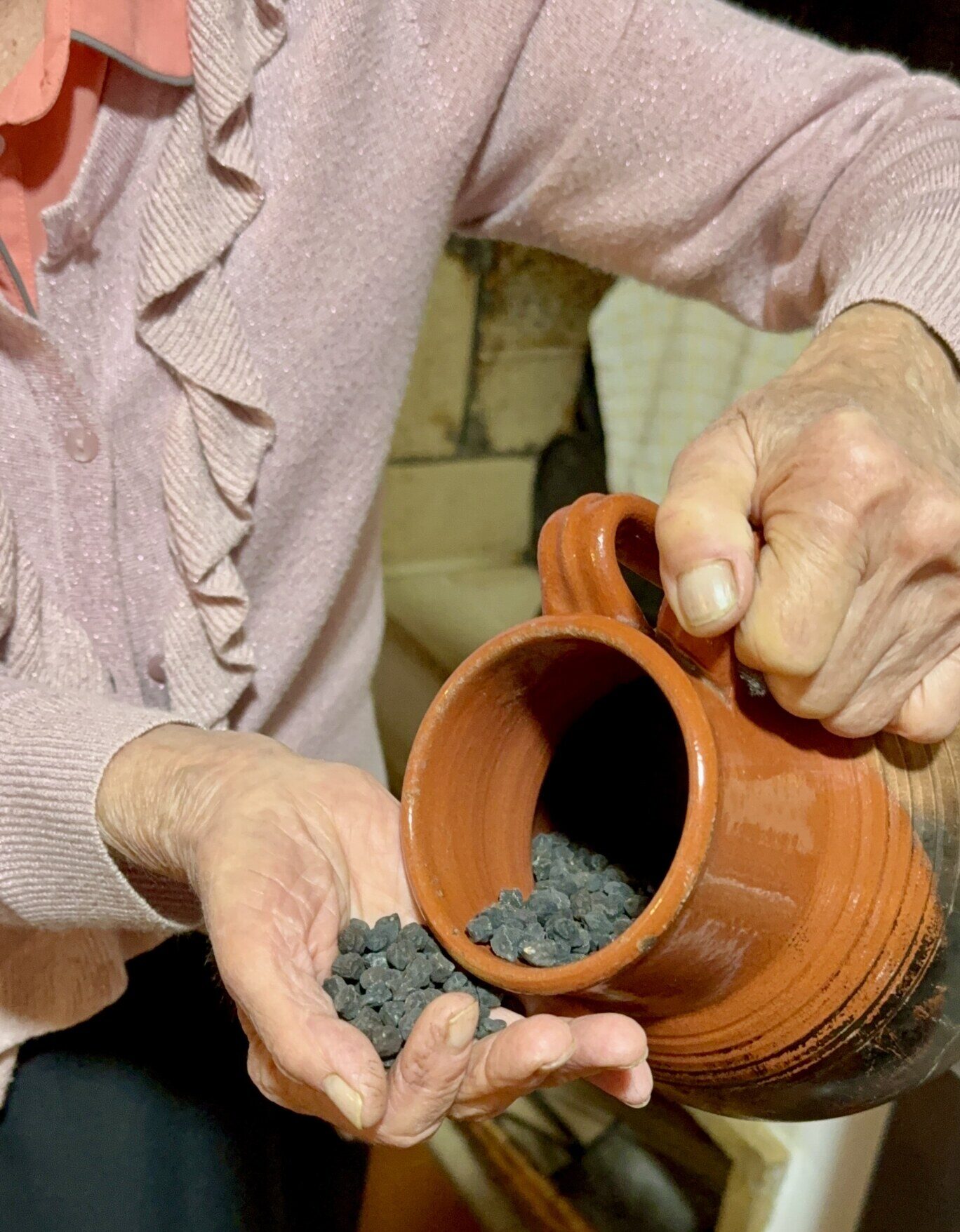
Zia Maria and black chickpeas in a traditional “pignatella” vase
THE SUNDAY MARKET SCHEDULE
1st Sunday of the month:
NARDO
Via XX Settembre, 50 stands
BARI
Piazza del Ferrarese or Piazza Giuseppe Massari, 50 stands
FRANCAVILLA FONTANA
Viale Lilla, 80 stands
TARANTO
Talsano, Via Ingegner Petio, area PIP zona industriale (in front of Ferramenta De Quarto), 50 stands
2nd Sunday of the month:
OSTUNI
Either Porta San Demetrio (Viale Oronzo Quaranta) or Corso Maggiore Antonio Ayroldi, 100 stands
3rd Sunday of the month:
CISTERNINO
Palazzetto dello Sport, 60 stands
MESAGNE
Via Ugo Granafei, 70 stands
4th Sunday of the month:
LECCE
Via XX Settembre, 80 stands
CEGLIE MESSAPICA
Piazza Sant’Antonio, 60 stands
TARANTO
Talsano, Via Ingegner Petio, area PIP zona industriale (in front of Ferramenta De Quarto), 50 stands
MASSAFRA (only during months with five Sundays)
Corso Italia, 60 stands
*The market schedules can shift a bit with the seasons.
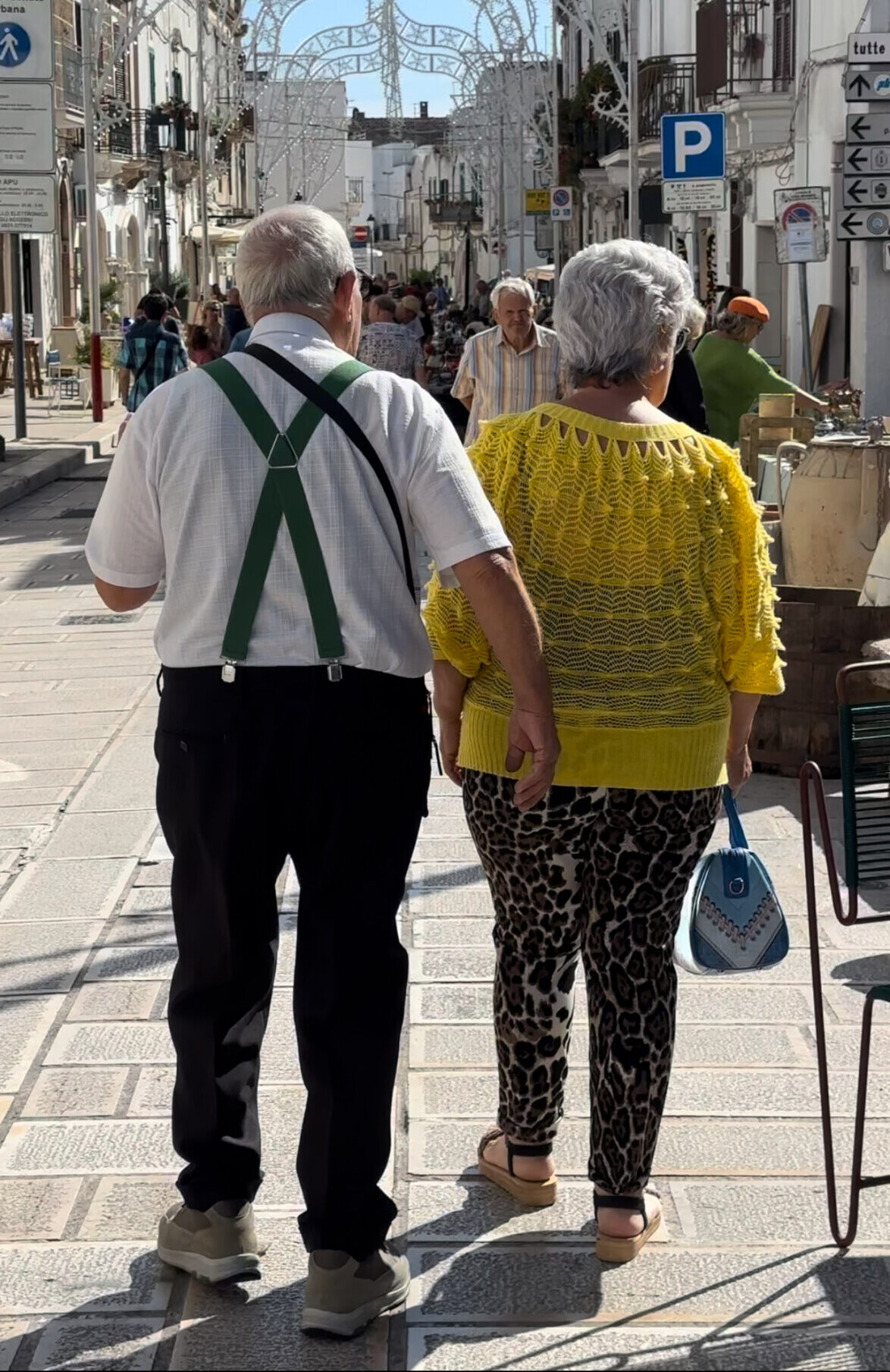
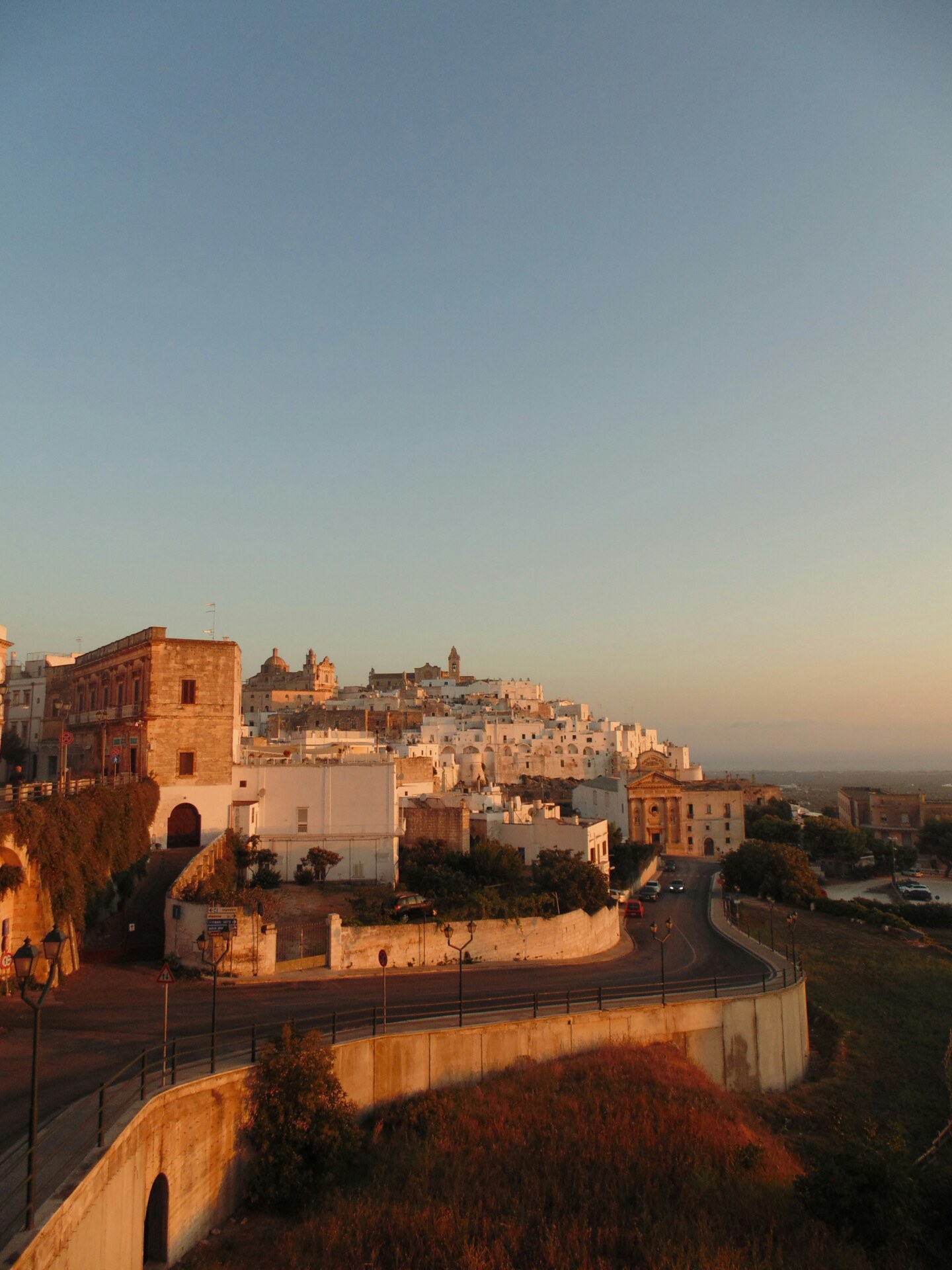
AN ENCYCLOPEDIA OF PUGLIAN ANTIQUES:
Keep your eyes peeled for these treasures; they’re some of the greatest keepsakes of this region’s history.
CERAMICS:
In past lives, these acted as vessels for wine and olive oil, for transporting water to the vineyards, for storing vegetables, or for cooking legumes, as my Zia does, on an open fire.
Cantarella: For storing and transporting wine, oil, and water. Over time, this stunning blue hue developed naturally due to the sulfites added to the water used for irrigating the vineyards.
Pignata/Pignatello: This is a smaller clay pot originally used for cooking over open fire–the famous Puglian fava bean puree is made this way, as is Zia Maria’s black chickpeas. Often, these feature two handles close together on one side to make them easier to grab, although it seems to me that Italian grandmothers’ hands are immune to heat while cooking.
Salaturo: Cylindrical vases (sometimes with handles, sometimes without, sometimes with lids, sometimes without), these ceramics were used for storage of grains or to preserve vegetables (peppers, eggplants) or sardines in salt. Those without lids would be closed off with a piece of wood and stone to apply continued pressure on top.
Limo: Massive bowls for washing or storage, or in my Zia Maria’s case, for mixing homemade soaps for the household.
Broca/Boccale: Before glass, these pitchers, sometimes with a matching set of ceramic cups, were used as serving vessels for wine–both at home and in the locales where wine was served.
Pumo: A cone-shaped good luck charm in most Puglian homes (more common in the southern part of the region) that represents a flower bud about to bloom; good things are coming.
AcquaSantiera: Little plaques with a small bowl for holy water, hung in the bedroom for prayers before and after bed, or at the entrance of the home for blessings.
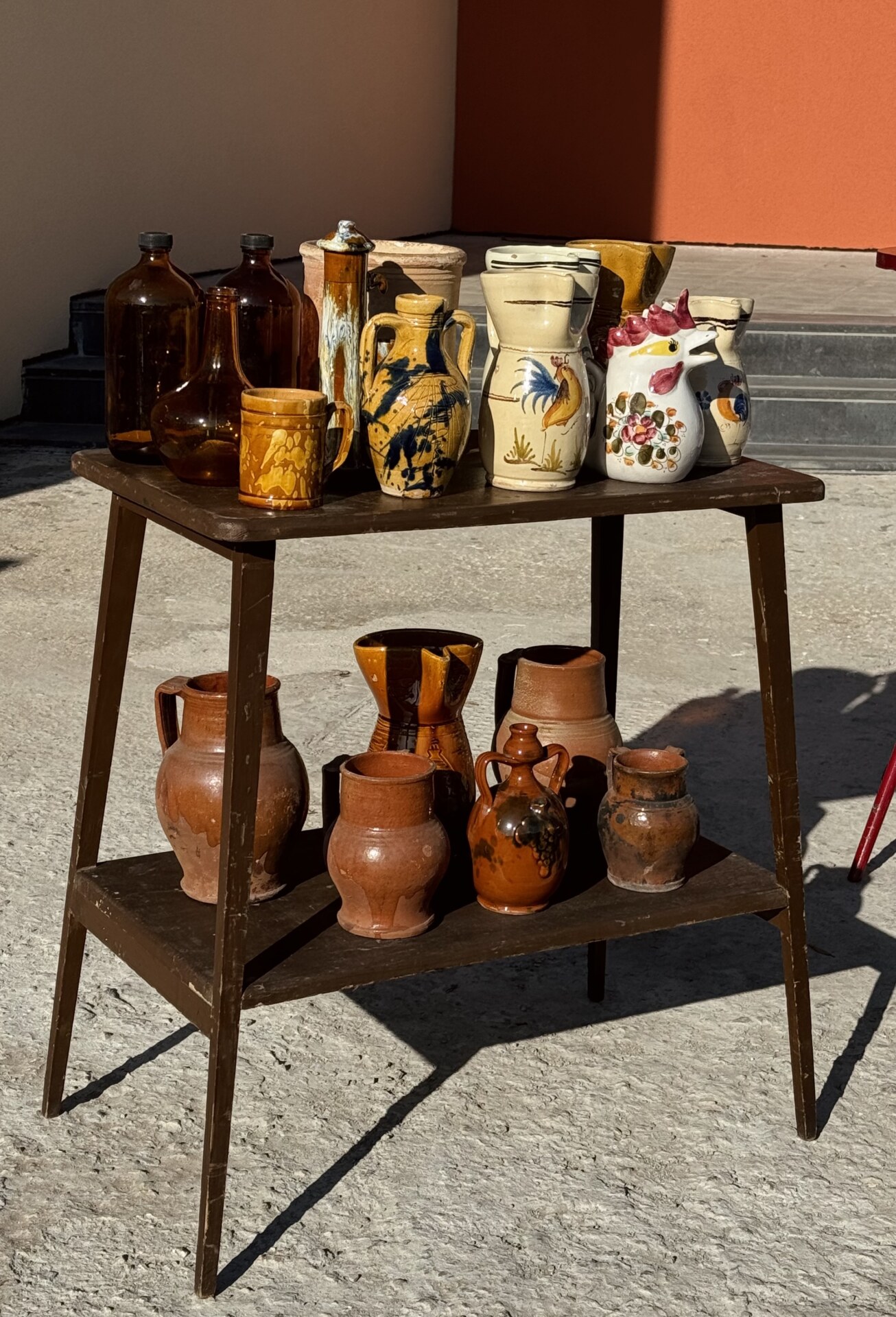

TEXTILES:
Sacchi di Juta: Woven jute sacks that were used for storing and transporting grains.
Lenzuola: Bed and table linens. The Puglian nonna preserves textiles like nothing I’ve ever seen before. Trust that you will have the most crisp, well taken care of textiles on the continent.
Vestaglia: If you want to dress like a Southern Italian at home in a cozy robe this winter, or run around the house in a vintage night dress, look no further!
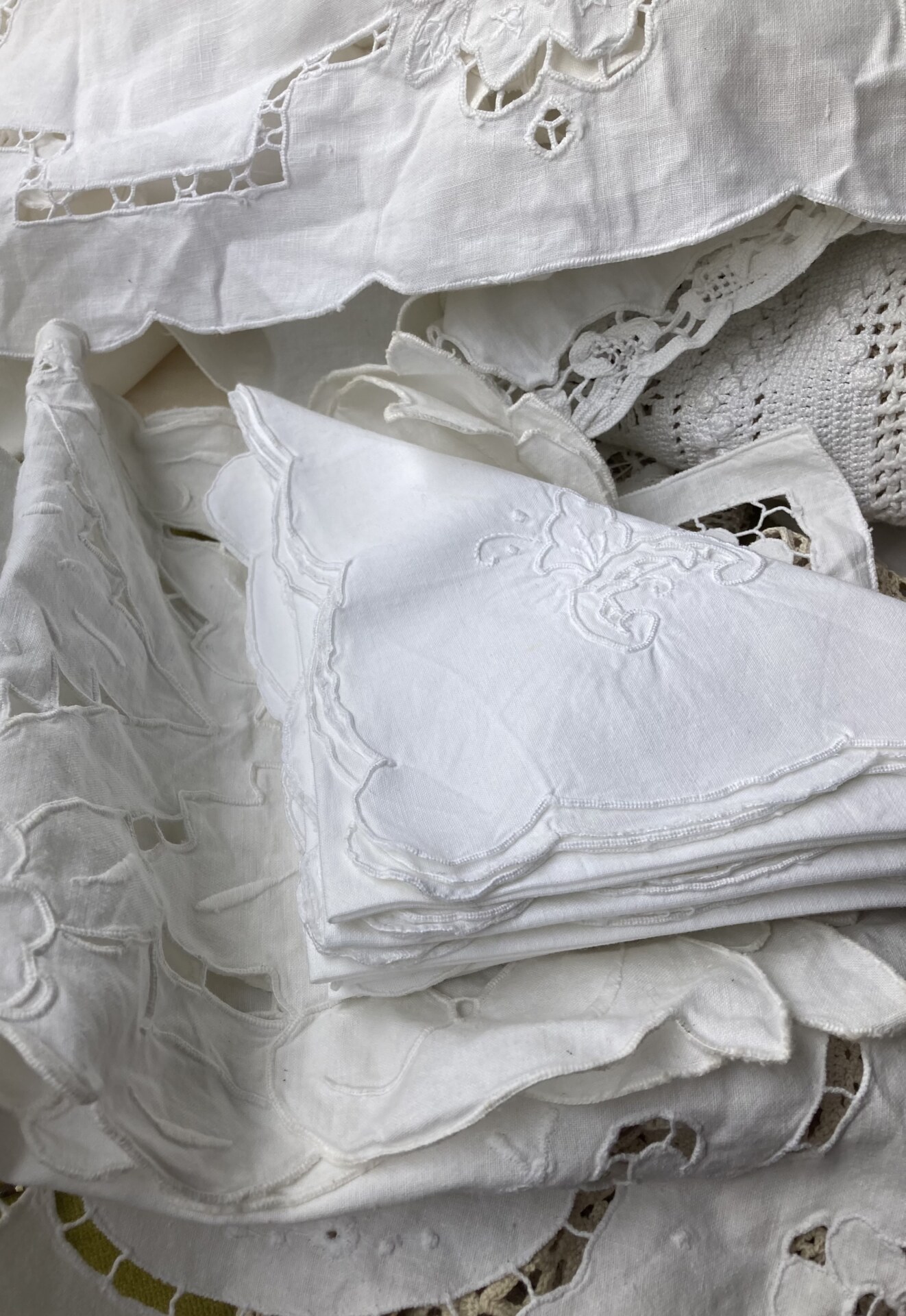
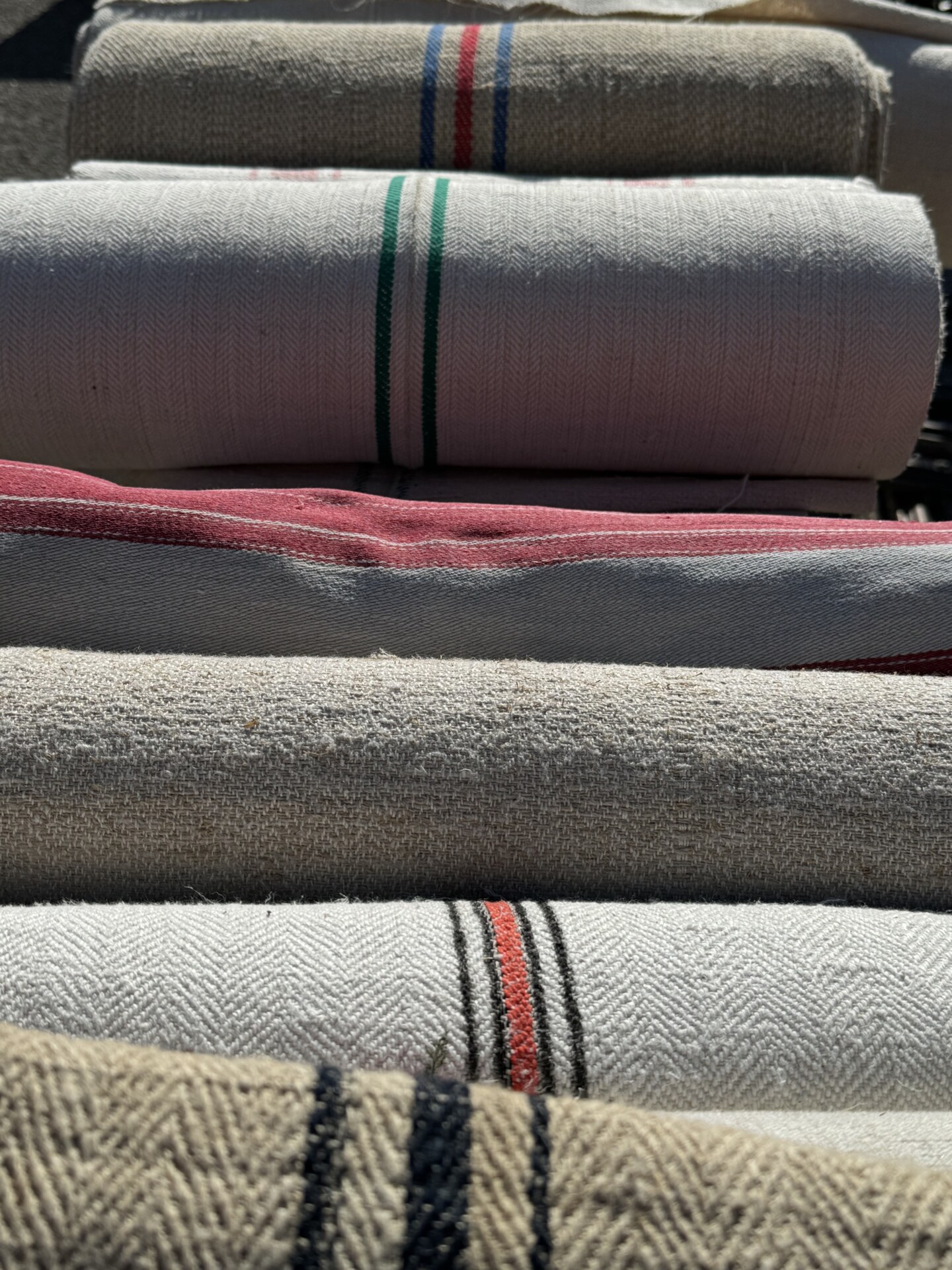
METALS:
Pentole di Rame Rosso: Prepare to find many of these exceptionally made copper pots and pans. Depending on the capabilities of your kitchen, these might be more aesthetic than useful.
Scaldino: A copper pot with a flat bottom and very long, usually wooden, handle. Water was boiled inside, and then the pot functioned as an iron for linens!
Mortaio: Mortar and pestles were used for herbs, as well as pepper and salt when fine grain salt wasn’t yet widely distributed.
Monaca: These metal grates were placed over fires to warm and dry clothes. In a country where only about 15% of households have a laundry dryer, this is a lovely idea!
Catino: Bowls that were to be filled with fresh water to bathe and wash the face. Many of the smaller ones were used specifically in rituals for new brides.
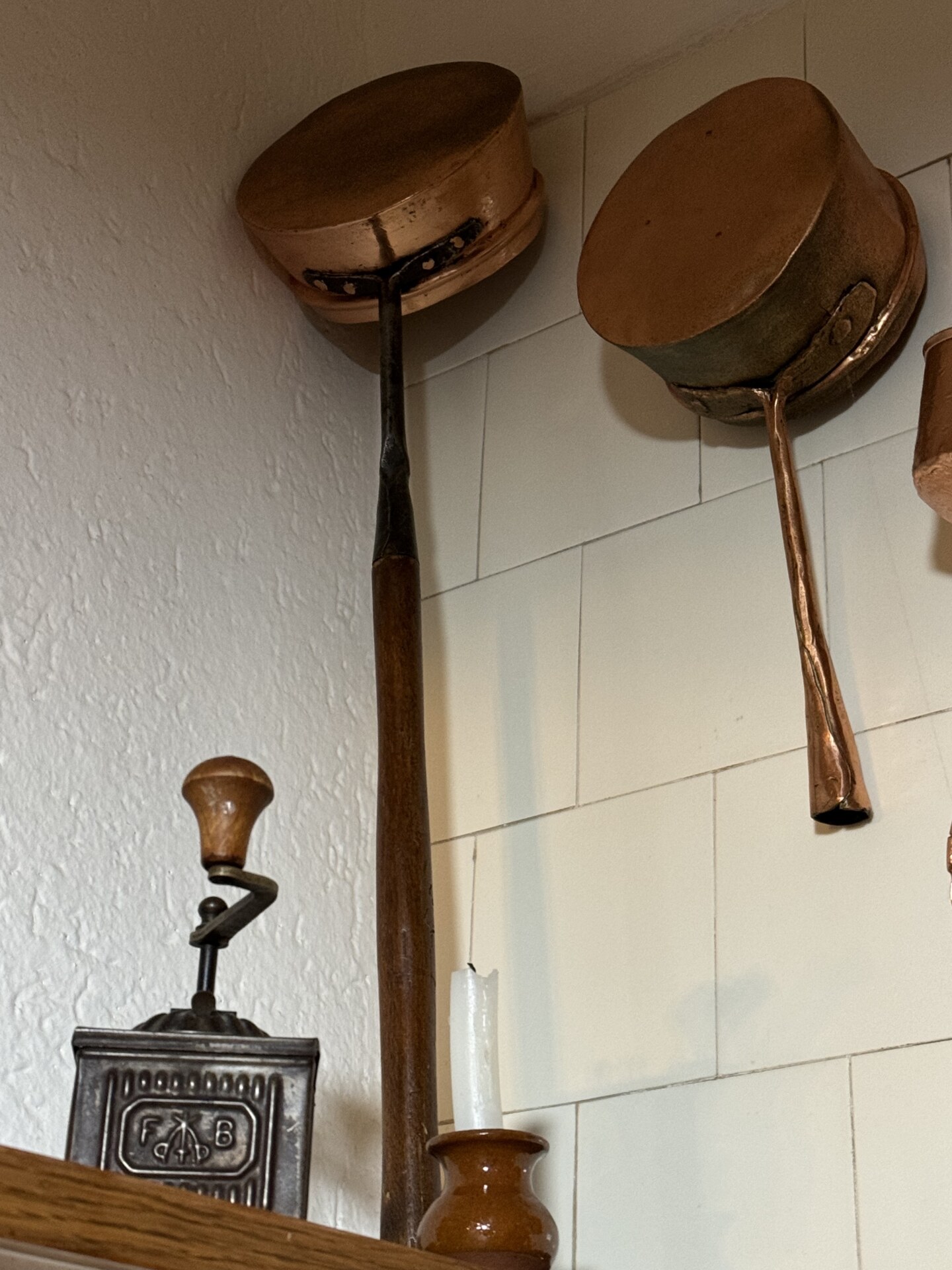
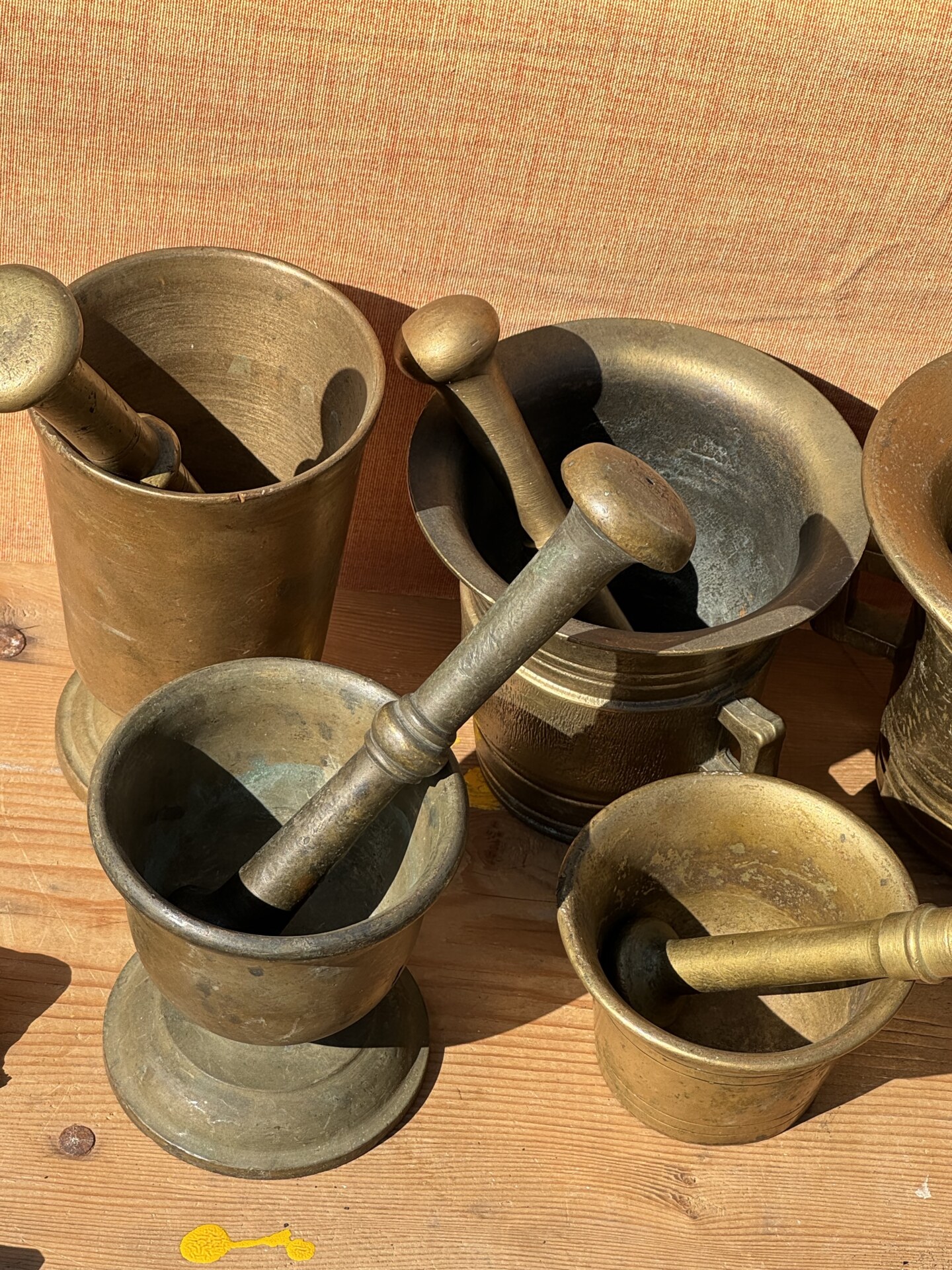
WOOD, FIBERS & RATTAN
Maidda: Long wooden panels used for making dough and leaving it to ferment.
Stragatur’o (in dialect): Wooden trays with ridges used to wash clothes by hand.
Cestini: Like many agricultural regions, there are woven baskets galore of all sizes and shapes.
Setaccio (in dialect): Large round trays used for sifting dried grains or legumes.
Mattarello: My transformation into a Puglian was complete the day I rolled panzerotti dough with a sturdy rolling pin. Try one for yourself; they just don’t make ‘em like they used to.
Luminarie: Puglian luminarie, wooden structures adorned with colorful lights, are a huge part of the artisan culture here and play major roles in their celebrations. Some markets have vintage ones on sale!
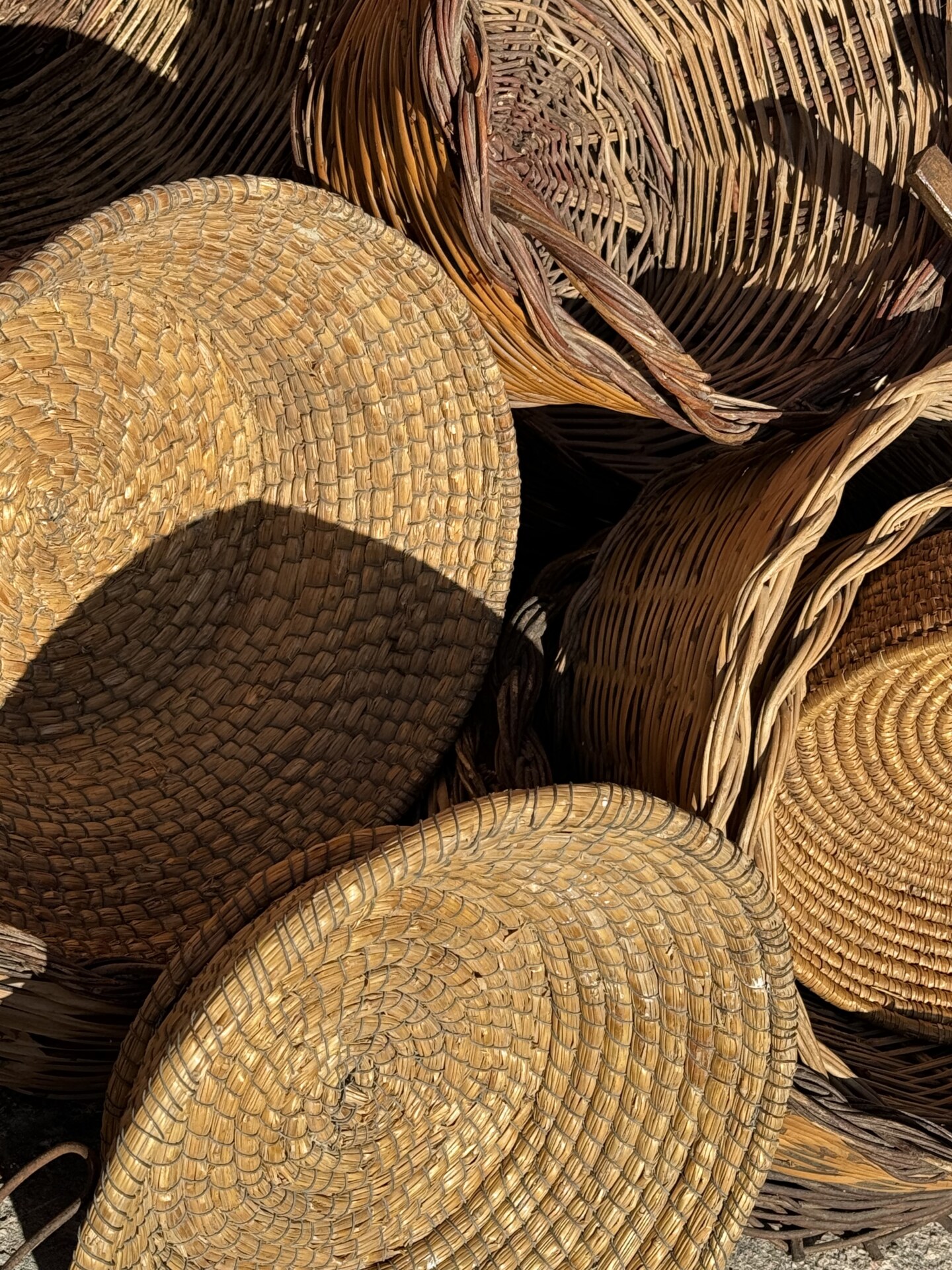
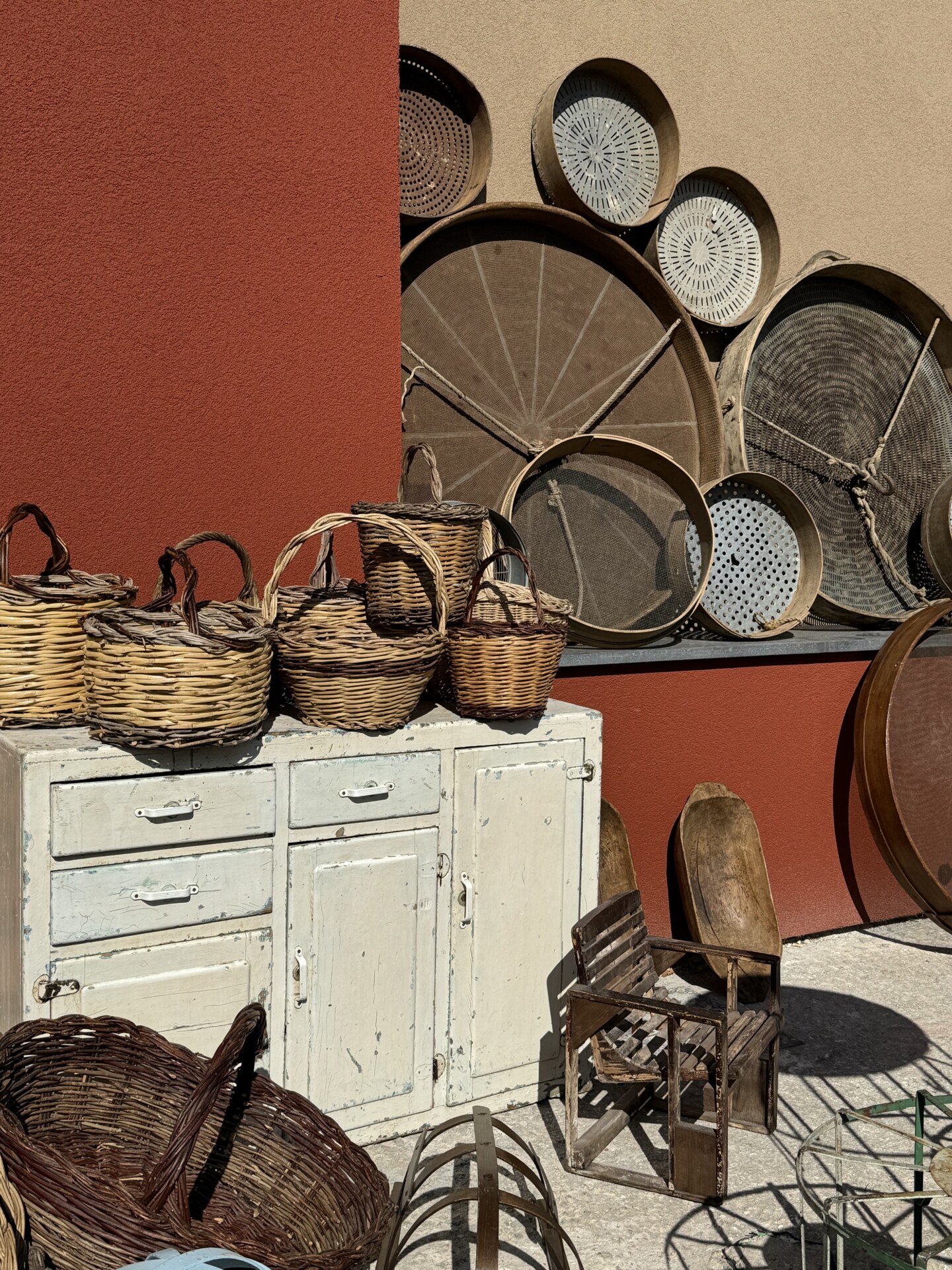
GLASS:
Damigiana: These massive green glass jars were used for storage of liquids and the fermentation of wine, vinegar, or beer.
Paralume: 90% of the Puglian kitchens I’ve been in have these pleated glass lampshades.
Enjoy exploring the markets, and, if you see Gianni, tell him I say hi!

